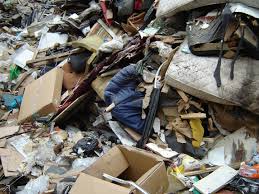In affluent countries, the main motivations for waste reduction are frequently related to the high cost and scarcity of suitable sites associated with the establishment of new landfills, and the environmental degradation caused by toxic materials in the deposited wastes. The same considerations apply to:
Large metropolitan areas in developing countries that generally are surrounded by other populous jurisdictions, and
Isolated small communities (such as island communities).
However, any areas that currently do not have significant difficulties associated with the final dispositions of their wastes disposal pressures can still derive significant benefits from encouraging waste reduction.
Read Also : Definition and Waste Minimization/Reduction Process
Their solid waste management departments, already overburdened, are ill-equipped to spend more funds and efforts on the greater quantities of wastes that will inevitably be produced, if not otherwise controlled, as consumption levels rise and urban wastes change.
Key Concepts in Municipal Waste Reduction
- Action for waste reduction can take place at both the national and local levels.
- At the National Level
- Some strategies for waste reduction include:
- Redesign of products or packaging
- Promotion of consumer awareness and
- Promotion of producer responsibility for post-consumer wastes.
- At the local level
- The main means of reducing waste are:
- Diversion of materials from the waste stream through source separation and trading
- Recovery of materials from mixed waste
- Pressure on national or regional governments for legislation on redesigning packaging or products and
- Support of home composting, either centralized or small-scale.
Household Waste Minimization
Waste minimization at household level can be achieved by the adoption of a variety of strategies. But in a domestic situation, the potential for minimization is often dictated by lifestyle.

Some people may view it as wasteful to purchase new products solely to follow fashion trends when the older products are still usable.
Adults working full-time have little free time, and so may have to purchase more convenient foods that require little preparation, or prefer disposable nappies if there is a baby in the family
Appropriate amounts and sizes can be chosen when purchasing goods; buying large containers of paint for a small decorating job or buying larger amounts of food than can be consumed create unnecessary waste.
Also, if a pack or can is to be thrown away, any remaining contents must be removed before the container can be recycled
Home composting, the practice of turning kitchen and garden waste into compost can be considered waste minimization. Individuals can reduce the amount of waste they create by buying fewer products and by buying products which last longer.
Read Also : Traditional Solid Waste Disposal Methods
Mending broken or worn items of clothing or equipment also contributes to minimizing household waste
The amount of waste an individual produces is a small portion of all waste produced by society, and personal waste reduction can only make a small impact on overall waste volumes.
Yet, influence on policy can be exerted in other areas. Increased consumer awareness of the impact and power of certain purchasing decisions allows industry and individuals to change the total resource consumption.
Consumers can influence manufacturers and distributors by avoiding buying products that do not have eco-labeling, which is currently not mandatory, or choosing products that minimize the use of packaging
Where reuse schemes are available, consumers can be proactive and use them.

